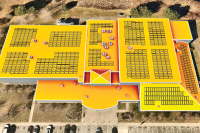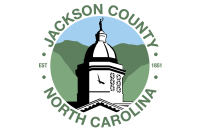Wilderness advocates criticize congressman

A meeting to talk about wilderness started off with a bang last week when a group of pro-wilderness folks who had showed up hopeful of putting a bug in Congressman Mark Meadows’, R-Cashiers, ear were asked to leave.
“We were frankly just completely shocked,” said Buzz Williams, program associate for the Chattooga Conservancy. “The (U.S.) Forest Service came up and said, ‘This is not a public meeting anymore. You can’t come in.’”
Though the meeting’s attendees consisted of county government officials, Forest Service employees and a smattering of members from the Stakeholders Forum for the Nantahala and Pisgah Plan Revision, none of the county commissions represented had sent a quorum of their members, so the resulting discussion did not fall under the regulations that apply to public meetings.
“I think that violates the spirit of the law,” said Olga Pader, a hiking enthusiast from Franklin who supports additional wilderness.
Meadows, meanwhile, said the intent wasn’t to exclude anybody from the conversation — attendance was kept limited to county representatives and stakeholders forum members to allow for a “frank” conversation, fulfilling a request that had come directly from county commissioners in Meadows’ district. Media representatives were allowed to cover the meeting — it was by no means a secret gathering, he said.
“It’s not a matter of not wanting input from everybody,” Meadows said. “It’s just that the meeting was especially designed as a request from our county commissioners to be able to provide input to the Forest Service.”
Related Items
In fact, Meadows has scheduled another listening session for 10 a.m. Tuesday, Oct. 4, at the Haywood County Historic Courthouse, in response to criticisms stemming from last week’s meeting. He plans to invite those who were denied entry to the listening sessions for government officials to give him and Forest Service staff their input.
Differing perspectives
Accounts differ as to just how large the group of wilderness supporters was. The wilderness supporters say there were about 30 of them. Meadows, meanwhile, said the number was more like five or six and that 30 would be “a gross exaggeration.” Cathy Dowd, public information officer for the Forest Service, said she is pretty sure she talked to everyone who was turned away — a total of nine people.
Hugh Irwin, landscape conservation planner for The Wilderness Society and a member of the stakeholders forum, said there were definitely about 30 pro-wilderness citizens who came but that he can understand why the head counts differ. People arrived in waves. A group of about 12 was there early, when he got there, and more people arrived later, just as meeting attendees were migrating upstairs. Meadows had originally planned to hold the meeting in the commissioners’ board room, but the group moved upstairs when that room proved too small for the 50 or so people who turned up.
“Neither Meadows nor the Forest Service’s staff would have seen all the people who couldn't get in the meeting,” Irwin said. “Many late arrivers were told by others that they couldn’t get in.”
Irwin, who was allowed to attend the meeting as a member of the stakeholders forum, said that the dispute as to who could attend was more a matter of confusion than anything else — the meeting was targeted to the specific management concerns of counties with wilderness inside their boundaries.
“It was about accessibility with regard to existing property and what that would mean to us as counties,” said Kevin Corbin, chairman of the Macon County Commissioners and a candidate for N.C. House District 120.
That’s not to say that the exclusion of non-invited people didn’t raise any eyebrows.
“I sort of questioned why you wouldn’t let someone stay and listen, maybe not let them take part in the discussion,” said Jackson County Commission Chairman Brian McMahan.
Wilderness opposers in the majority
It would be incorrect to say that the room of county representatives was neutral on the question of wilderness. Except for Jackson, they had all passed a resolution at some point opposing additional wilderness designation. One of the few pro-wilderness voices in the room, Irwin said he doesn’t believe those resolutions reflect the beliefs of the people represented by the commissioners who enacted them.
“I think it’s just a really unfortunate circumstance of having a meeting to allow the counties to speak about wilderness when the counties really hadn’t listened to a lot of their constituents about the issue,” he said.
However, Meadows said, from his point of view polling commissioners is the best way to get a handle on what his constituents want while still keeping the meeting small enough for a productive discussion. When assemblies get too big, he said, conversation is reduced to sound bites and it’s hard to dive too deeply into the issues.
“I’ve been relying very heavily on my county commissioners because I feel like they’re closest to the pulse of what their people want,” he said, “and I’ve got a very diverse group of county commissioners, both Democrat and Republican.”
But wilderness supporters feared that the guest list indicated a meeting reduced to an echo chamber of anti-wilderness sentiment.
“I got the full report,” Williams said of his conversations afterward with those who were allowed inside. “It was a wilderness-bashing session, put up, signed, sealed and delivered. Meadows heard what he came to hear from a handpicked audience.”
Meadows himself does not support additional wilderness, believing that there are other, less permanent, ways to preserve ecologically important areas in the mountains. Based on the input he’s received so far, he said, he does not plan to introduce legislation designating additional wilderness.
“I believe there are designations that still preserve the wonderful beauty of our mountains but yet at the same time are shy of the wilderness designations that are permanent in nature,” he said. “Based on the input that I currently have from constituents and from my county commissioners, I would only support a Forest Service plan that had a minimal impact in terms of permanent wilderness designations.”
However, Meadows emphasized that he’s willing to hear from any group that wants to speak with him and has already set up a forum for wilderness supporters to give their input.
Bob Scott, Franklin’s mayor, was skeptical of Meadows’ willingness to hear divergent opinions. While no municipalities attended the meeting in Franklin, they were invited. Franklin’s board is the only town in the region to have passed a pro-wilderness resolution, however, and the town did not receive an invitation. According to Meadows, the physical invitations were sent by interns and whoever was responsible for mailing Franklin’s transposed the numbers on the address, so it never arrived.
“Never seen or heard of such, that a transposed box number would have kept us from receiving the invitation, especially when our local post office goes out of its way to make sure everyone gets their mail,” Scott said. “I get mail all the time when someone posts the wrong house number.”
However, Meadows said, it truly was a mistake and Scott will certainly merit an invitation to the Oct. 4 meeting.
“Mayor Scott is involved in this in a very active way,” he said. “We’re going to make sure he gets an invite for the Haywood meeting.”
James Melonas, deputy forest supervisor for North Carolina’s national forests, said that the forest planning process as a whole has been incredibly open and transparent, with more than 25 public meetings held to date — before even a draft document has been released. Another round of meetings will be held throughout the planning region this fall, giving pro-wilderness folks like Pader and Williams a chance to deliver their perspectives in public.
Meadows will have his staffers at those meetings, though the congressman himself is unlikely to be there in person due to the upcoming legislative season in Washington, D.C.
County concerns
The meeting wasn’t really a debate about the pros and cons of additional wilderness, Corbin said.
“It wasn’t a discussion about whether or not to have wilderness,” Corbin said. “There was very little discussion about that.”
Emergency response was the biggest topic of the afternoon, it seems, with county emergency directors discussing how wilderness designation impacts their ability to conduct rescue operations.
“We had a number of our emergency responders there,” Meadows said. “How do we handle potential accidents and the need to respond to those areas when not only roads would be allowed to be overgrown but it would be difficult to get people in and out and rescued when you cannot use mechanized vehicles to do it without approval of the ranger?”
Wilderness areas are meant to be primitive, meaning that no mechanized or motorized equipment is allowed, and hiking trails are just about the only transportation arteries permitted — no roads. Counties were concerned that increased wilderness designation would impair search and rescue efforts.
But Melonas made it clear that, in a life or death situation, emergency responders can cut any lock they need to or run any motorized equipment necessary to get to the injured person.
“County Search and Rescue and other first responders are able to go in and do what they need to do to rescue the person that might be having an emergency,” Melonas said.
However, there was some discussion about the chain of command — who needs to be notified and when.
“I think at the end of the day they decided they needed to clarify what the regulations say, who’s to be contacted,” Corbin said. “I think that was a positive discussion.”
The group also talked about potential impacts to county revenue, via federal Payment in Lieu of Taxes funding, called PILT, and the Secure Rural School Funding it receives from timber sales.
“The real issue was all about Payment in Lieu of Taxes and the Secure Rural Schools Act with regard to harvest timber and how much would be healthy, how much would be set aside in the moneys going to local schools as a result of decreased timber harvest on public lands,” Meadows said.
Timber harvest is not permitted in wilderness areas, so some county commissioners feared that additional designation would negatively impact the revenue stream coming from timber sales. However, getting an area logged is not always easy — only a fraction of the acreage recommended for timber harvest under the existing forest management plan has been logged.
When it comes to PILT, Irwin said, wilderness designation has zero impact.
“Whether an area is wilderness or not, if it’s a national forest those PILT payments and Rural School Payments come in,” Irwin said. “I don’t know if that satisfied folks, but wilderness does not affect how much funds counties get.”
Meadows acknowledged the point but said that some legislation is being introduced that, if enacted, could impact how wilderness plays into PILT funding.
“Some of the proposals that are coming from the west(ern U.S.) would actually affect compensation based on classification,” Meadows said. “Again it’s too early to tell, but it does have that potential and I don’t see that being really addressed until the spring of next year.”
Overall, attendees seemed to feel that the meeting was a good one, increasing their knowledge and allowing for candid conversations with their representative.
“I thought it was a very good opportunity,” McMahan said.
“It was excellent discussion I think everybody felt free to just discuss issues,” Corbin added.
Meadows said he plans to continue collaborating with the counties and following the forest planning process. A draft plan is expected in the spring.
“There will be follow-up from each of the county commissioners in terms of specific things they would like to see or not see,” he said.









